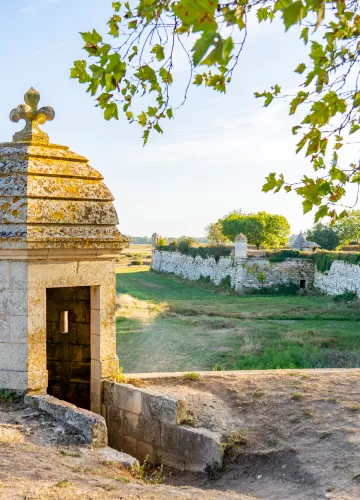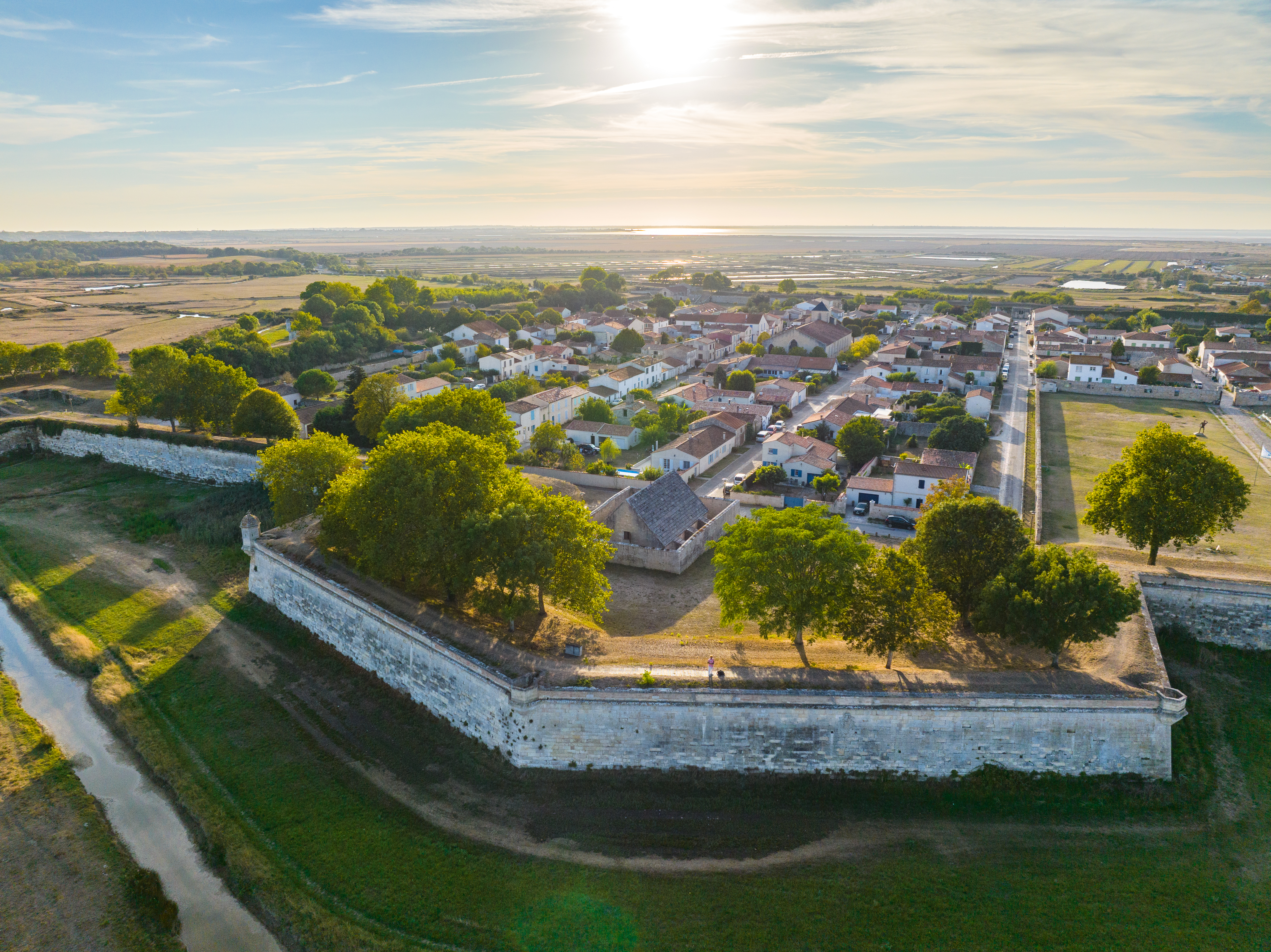
Brouage
This ancient stronghold, founded in 1555 by Jacques de Pons, was once bordered by the sea. The white gold of salt ensured Brouage's wealth before Richelieu decided to turn it into a war port. Although the ocean has since retreated, this peaceful little village north of Marennes, just a few kilometers from the ocean, is a must-see for heritage lovers. The ramparts of its citadel, with its emblematic watchtowers, stand in the middle of marshes offering an incredible diversity of flora and fauna. The stronghold of Brouage became the 156th French commune to be awarded the label ofMost Beautiful Villages in France in 2017.
A rich history...
Hiers was originally a small medieval village built on the shores of the ancient Gulf of Saintonge. The alluvial deposits carried by the Charente river to the north and the Seudre to the south, as well as those deposited by the ocean at each tide, gradually silted it up. With the gulf filled in and the sea withdrawn, man gradually shaped this marshy landscape, making it the salt granary of the kingdom of France in the Middle Ages, with the emergence of numerous salt marshes. The salt produced was exported throughout northern Europe. Trading ships would sail up to the Broue tower to fill up with salt. To maintain the same waterline on the outward and return trips, these ships arrived weighted down with sand and gravel, which they unloaded at the entrance to Le Havre. In 1555, the resulting "islet" enabled Jacques de Pons, lord of the châtelaine d'Hiers, to order the construction of a salt trading port: Jacopolis sur Brouage. Prosperous and Catholic, the town was fortified under the orders of Richelieu in 1628, who had understood its importance. Brouage's decline began in 1666, with the creation of the royal arsenal at Rochefort, where the inhabitants of Brouage settled en masse. Brouage was also the birthplace of Samuel Champlain, founder of Quebec City in 1608.
Did you know?In figures, Brouage boasts 7 bastions, 19 watchtowers, 7 curtain walls, 2 km of ramparts, 4 posterns, 2 underground ports and 4 public latrines. All this to ensure the daily life of Brouage's 4,000 civilian inhabitants in the 17th century, as well as the 500 to 2,000 soldiers garrisoned there.
A stone star in the heart of the marshes
The citadel of Brouage was once a salt trading port, fought over by Catholics and Protestants during the Wars of Religion. In 1627, Cardinal de Richelieu became its governor. The following year, Pierre d'Argencourt built the city walls, which were reinforced by Vauban in 1685. In addition to the ramparts, a number of other buildings can still be seen: the royal forge, the prison forge (named after its use as a prison cell), the food market, the ice house, the underground port and the powder magazines. A stone star in the middle of the marshes, the citadel offers the surprising spectacle of a port in the middle of the land. It has been listed asa historic monument since 1886.

TheBrouage church was built in 1608. The floor is covered with tombstones under which lie rich 17th-century salt merchants, soldiers and former governors. The vaulted ceiling is in the shape of an upturned ship's hull. Today, the church houses the memorial to the origins of New France. The stained-glass windows are the work of Nicolas Sollogoub. Between 1982 and 2001, they were donated by the Province of New Brunswick, the City and Province of Quebec, the Province of Ontario, private and French public donations, and Nicolas Sollogoub himself.
La Halle aux vivres was built in 1631 to store food for Brouage's large garrison at the time. Grain was stored upstairs, while food and wine were stored in barrels on the first floor. This brick and ashlar building was restored in 1994 according to the 1754 plans.
Today, you can discover the permanent interactive exhibition "Brouage se la raconte!" and other areas dedicated to conferences, educational activities and documentary research related to Brouage and its marshes. For more information, click here!
